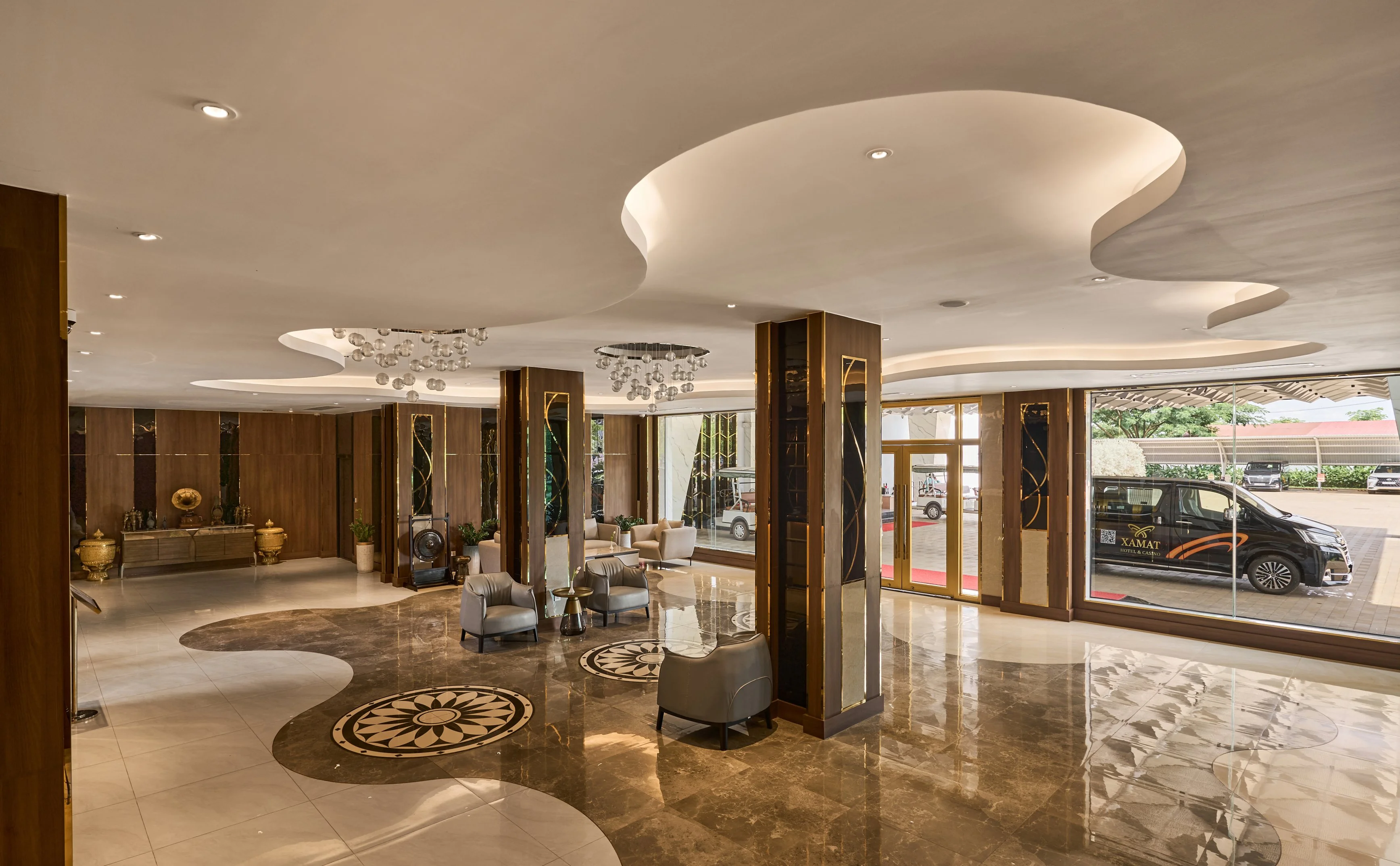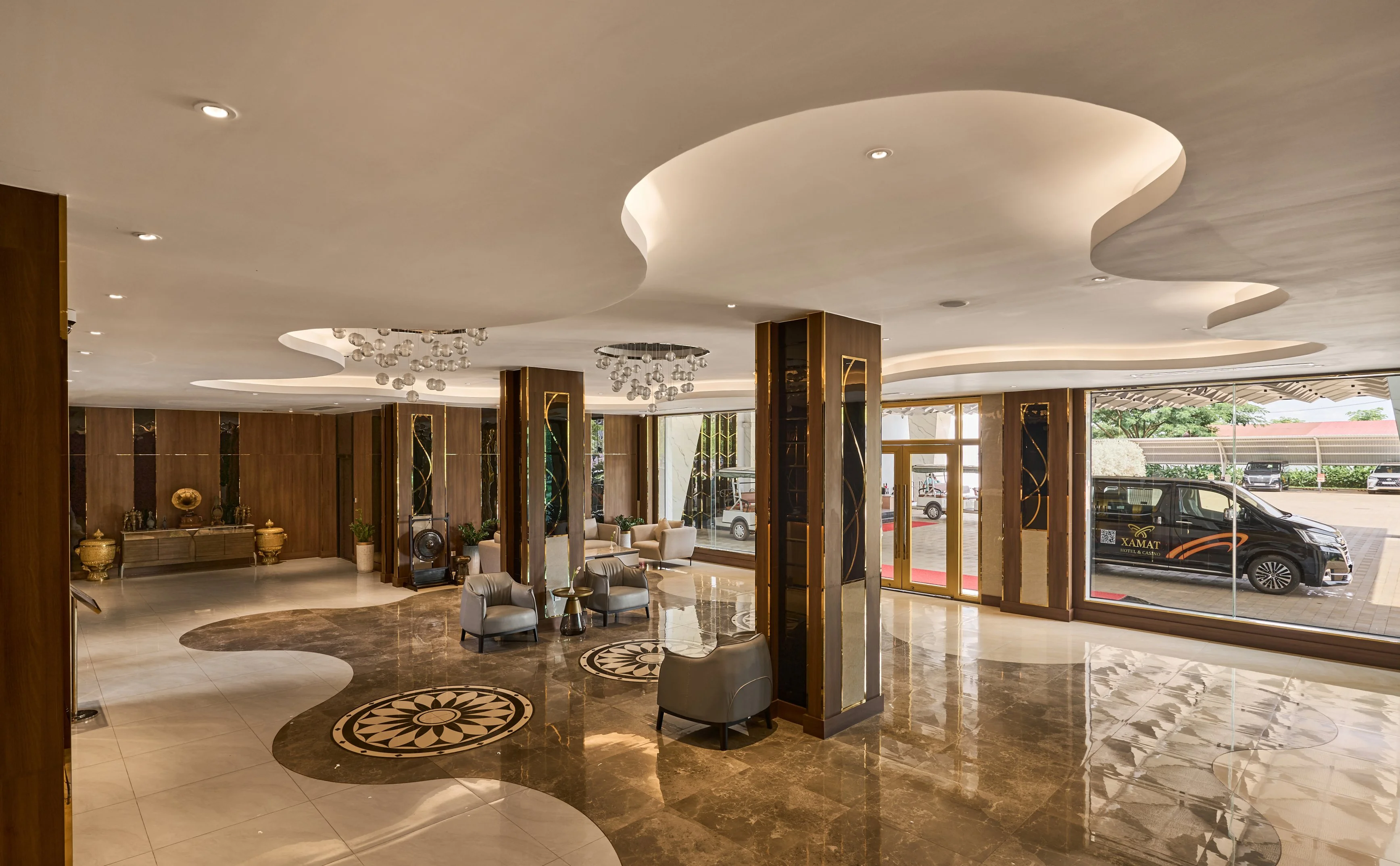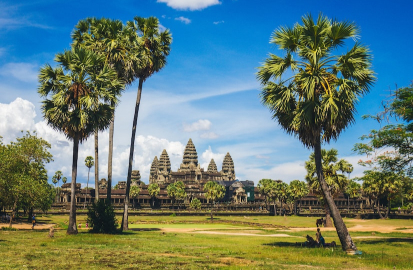Golden Empire – Part 3: Khmer Fall
King Suryavarman II was extremely warlike. The Khmer Empire was not built so large. Nearly 70% of mainland Southeast Asia, from Laos to Burma, belonged to this war god. In terms of area alone, the Khmer Empire was 10 times larger than Dai Viet at the same time. Suryavarman attacked the capital city of Do Ban and the holy land of My Son of Champa. And this king's next target was Dai Viet territory.
Suryavarman - Quang Trung of Khmer, won every battle, many kingdoms fell under his feet, but this time they encountered difficulties in Dai Viet. The Khmer army arrived in Nghe An in the winter and was stopped by the Ly army, and the Cham army attacked from behind. For the first time, the Vietnamese and Cham cooperated to repel the common enemy. Later, because the miasma was too heavy, the Khmer king passed away right on our country's territory.
The majestic and proud Angkor Wat was founded by Suryavarman II, but it was also the pain of Suryavarman II's soul wandering somewhere in the clouds and mountains of Dai Viet, because there was not a single stone in Angkor Wat recording the date of death of the ambitious emperor.
Finally, thanks to archaeology, people found the burial place of Suryavarman, which was Beng Mealea. This mausoleum was as big as a small city and had four libraries located at the four corners. Thanks to finding Beng Mealea, people were able to decipher many things in the life of this great king. Unfortunately, his tomb is not as intact as Qin Shi Huang's. It was dug up by grave robbers who took all the gold, silver and jewels and heartlessly threw the king's coffin to the ground.
The last glorious time of the Khmer occurred under the reign of King Jayavarman VII. This king took back the country from the Cham and built Angkor Thom, or the Great City, the last capital of the Khmer empire.
Angkor Thom is located on the Tonle Sap Lake. Anyone who visits Cambodia will definitely experience taking a boat trip around Tonle Sap Lake. This lake in the middle of Cambodia is so huge that you can fit Phu Quoc, Singapore and Hong Kong in it at the same time. Today, you can visit the floating village of Kampong Phluk to experience the unique lifestyle of the Tonle Sap residents. If you come during the rainy season, the houses look like they are floating on the water, but if you come during the dry season, you can admire the structures that make up the houses. The Panduranga Cham people in Ninh Thuan and Binh Thuan defeated the Khmer empire on this lake in a naval battle, killed the Khmer king and then invaded the capital Angkor to destroy it, marking the decline of the empire.
The road leading to the ancient capital of Angkor Thom is also imbued with spirituality and mystery. On both sides are statues of gods embracing the bodies of seven-headed snakes, several hundred meters long, leading into the city.
Symbolically, Angkor Thom is a miniature model of the universe. The capital is divided into four parts along the main axes. The Bayon temple is located at the center of the axes and symbolizes the connection between heaven and earth. The wall surrounding the city of Angkor Thom represents the stone wall surrounding the universe and the mountains surrounding Meru. The surrounding moat (now dry) represents the cosmic ocean. This moat was once filled with crocodiles to protect against attackers of the city.
The capital city of Angkor Thom is a square with five gates, each side of which is about 3km long, with a laterite wall 8m high. Most of the original structures were made of wood and have long since disappeared. A small temple called Prasat Chrung is located at each corner of the wall surrounding Angkor Thom. A 25m wide earthen embankment acts as a road around the city. We can also see the Victory Gate, which is aligned with the causeway leading to the Terrace of the Elephants.
The Terrace of the Elephants is one of the most impressive structures in Angkor Thom. It was built for the king to watch his victorious army return. What you see today is literally the ruins and only the foundations remain. Fortunately, the elephant heads are still a must-see attraction.
The most unique structure in the Angkor Thom temple complex is the Bayon temple. This area is a little creepy because it is a ruined ruin, but it is surrounded by human heads. From all directions, ancient stone faces seem to watch your every step as you wander through their lost civilization. Demons are on the left, gods are on the right. There are 256 faces in total on the 54 towers.
When mentioning Bayon, you cannot miss Ta Prohm. This temple looks just as creepy as Bayon but in a different way. If Bayon is scary in its human faces, then at Ta Prohm, you can see giant tree roots creeping around the temple like an octopus. It's okay during the day, but at night, going to Ta Prohm will definitely scare you. Angelina Jolie used to film Tomb Raider in Ta Prohm because it looked so surreal. If you're lucky, you can even see a Stegosaurus-like image at Ta Prohm temple.
Although Bayon is extremely famous, the most massive temple in Angkor Thom must be Baphuon. Its scale must be said to be second only to Angkor Wat. It is not simple that when scientists first witnessed the majesty of Baphuon, they had to frantically think of ways to protect it. The reason why the Egyptian pyramids are still standing, with the colors in the tombs still fresh, is because the dry and sunny climate of North Africa preserved them. Meanwhile, the Angkor area has been submerged in forests for too long and the tropical monsoon climate is really harmful to the relics. In the end, scientists decided to make a version of "The Millennium Puzzle".
If the boy Yugi in the work of the same name by Takahashi Kazuki had to figure out how to assemble a tiny pyramid in the palm of his hand to become the king of the game, then Baphuon is a much more difficult problem. Scientists numbered and dismantled the temple. If completed, Baphuon would regain its former grandeur. Unfortunately, the Khmer Rouge arrived halfway through the construction. It was then destroyed. Those who restore Baphuon in the future will have to continue solving that puzzle.
When reading the history of agricultural civilizations, the most important thing for me is: irrigation system. A bad irrigation system will lead to poor food production, which will result in a small population, and a small population will mean a lack of workers and soldiers to expand the territory. The Khmer people were masters of controlling the Mekong River. Their irrigation and drainage systems are sometimes not as good as many modern countries.
The Khmer Empire was a victim of climate change. Although they were masters of water, they eventually collapsed due to super drought and successive heavy rains. Many civilizations and dynasties in the world changed due to climate change, which directly affected the amount of food produced to feed the people. Climate change is extremely scary because it causes famine, disease, war and death (4 horsemen of the Apocalypse). The Permian extinction that killed almost all living things on Earth was also due to climate change.
The decline of the Khmer empire was an opportunity for another people to rise. Between the 12th and 14th centuries, the Siamese (Thai) in the North could not withstand the expansion of the Mongol Empire, they gradually moved south and established the kingdoms of Sukhothai, Lanna and Ayutthaya.
The Siamese certainly could not ignore the rich empire dying next door. In 1431, they besieged Angkor and the Khmer empire ended. The king fled to what is now Phnom Penh.
After Angkor was destroyed by the Siamese and before the capital Oudong was established, the Cambodians had another prosperous capital that few of us Vietnamese know about, Longvek (or La Bich). The Siamese continued to destroy Longvek. The city collapsed, the Khmer were seriously weakened. From then on, this country went downhill and could not recover, leaving only the ruins of a glorious time.
However, the Khmer people have never forgotten their golden empire. When I arrived in Cambodia, I saw Angkor Wat appearing almost everywhere, from posters, pictures, keychains, souvenirs, national flags... Although Angkor Wat was forgotten after the 16th century, it was never completely abandoned. The Khmer royal family often returned to worship and partly thanks to the large moat surrounding it, it protected the temple from the encroachment of the jungle.
Other Westerners, finding it hard to believe that the Khmer could build the temple, thought it was built at the same time as Rome. Seeing is believing, so visit Angkor when you have the chance, it is a neighboring country of Vietnam so it is very easy to go. I am glad that a wonderful creation like Angkor still exists after nearly a thousand years and can be seen with the naked eye, instead of through books and imagination.




